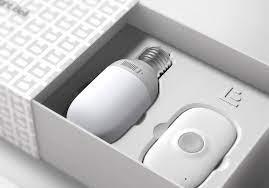Introduction:
In a rapidly evolving world, technology has proven to be a game-changer in improving the lives of individuals with various disabilities. Deaf technology, in particular, has seen remarkable progress in recent years. With the development of innovative assistive devices and applications, the Deaf community can now bridge communication gaps, access information, and participate more fully in all aspects of life. In this blog, we'll explore some of the remarkable assistive devices and innovations that are transforming the lives of the Deaf community.
Hearing Aids and Cochlear Implants
Hearing aids and cochlear implants are two of the most widely recognized and impactful assistive devices for those with hearing impairments.
Hearing Aids:
Modern hearing aids have evolved significantly, becoming smaller, more powerful, and capable of filtering out background noise.
Many are now equipped with Bluetooth connectivity, allowing users to stream audio directly from smartphones, TVs, and other devices.
Smartphone apps enable users to adjust settings, monitor battery life, and even locate lost hearing aids.
Cochlear Implants:
Cochlear implants are surgically implanted devices that can restore some level of hearing to those with profound hearing loss.
Ongoing advancements in implant technology have led to improved sound quality and speech recognition.
Many implants now offer wireless connectivity and smartphone apps for personalized control.
Video Relay Services (VRS)
Video Relay Services are revolutionizing communication for Deaf individuals. These services provide real-time interpretation between sign language users and spoken language users, making phone calls and video chats accessible. Popular VRS platforms like Purple, ZVRS, and Sorenson Relay enable Deaf individuals to communicate more freely, both personally and professionally.
Captioning and Speech-to-Text Technologies
Real-time captioning and speech-to-text technologies are essential for Deaf individuals to access information from various media sources, including television, movies, webinars, and conferences. Advances in automatic speech recognition (ASR) and machine learning have improved the accuracy of captioning, making it a valuable tool for Deaf individuals.
Sign Language Recognition Software
Sign language recognition software, powered by computer vision and AI, is making inroads in bridging the communication gap between Deaf and hearing individuals. These technologies can interpret sign language gestures and convert them into spoken or written language. Companies like SignAll and MotionSavvy are pioneering in this field, enhancing accessibility for Deaf individuals in various settings.
Mobile Apps for Sign Language Learning
Mobile applications have become a powerful tool for learning American Sign Language (ASL) and other sign languages. Apps like "ASL American Sign Language" and "The ASL App" offer interactive lessons, videos, and quizzes to help users learn sign language at their own pace. These apps are not only beneficial for the Deaf community but also for individuals interested in becoming more inclusive communicators.
Vibrating Wearables
Vibrating wearables, such as smartwatches, are being harnessed to create tactile communication experiences for Deaf individuals. These devices can be programmed to deliver different vibration patterns, which convey information like phone calls, alarms, and notifications. They help Deaf users stay connected in a non-auditory way.
Telecommunication Relay Services
Telecommunication Relay Services (TRS) enable Deaf individuals to make phone calls through a relay operator who converts their sign language or text into spoken language for the recipient and vice versa. TRS has become an essential service for maintaining effective communication in various aspects of life.
Conclusion
Deaf technology has come a long way in enhancing the lives of Deaf individuals. Through a combination of innovative assistive devices, applications, and services, the Deaf community can break down communication barriers and access opportunities that were once difficult to reach. As technology continues to evolve, the future holds even greater promise for improved accessibility, inclusion, and independence for the Deaf community. It's an exciting journey towards a more equitable and accessible world for all.
imagesource:https://designwanted.com/deaf-technology-products-empowered-design/

